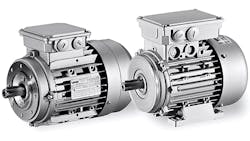What’s the Difference Between a Motor and a Drive?
It is important to distinguish between motors and drives. A motor is the mechanical or electrical device that generates the rotational or linear force used to power a machine. A drive is the electronic device that harnesses and controls the electrical energy sent to the motor. The drive feeds electricity into the motor in varying amounts and at varying frequencies, thereby indirectly controlling the motor’s speed and torque.
There are two types of drives: a standard inverter drive for controlling speed and torque only; and a servo drive for controlling speed and torque, as well as positioning machine components used in applications that require complex motion.
Together, a motor and drive form a “drive system.”
